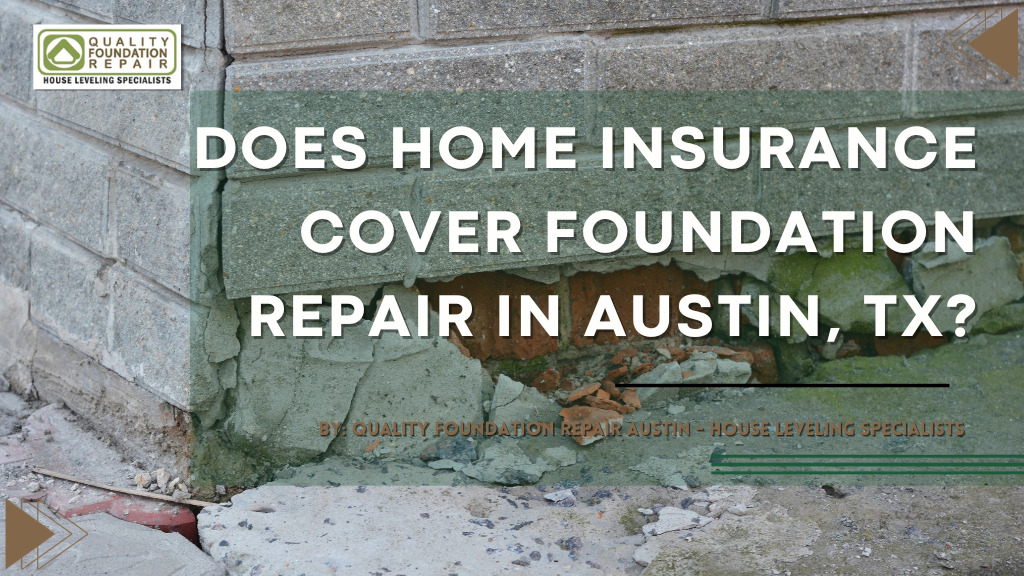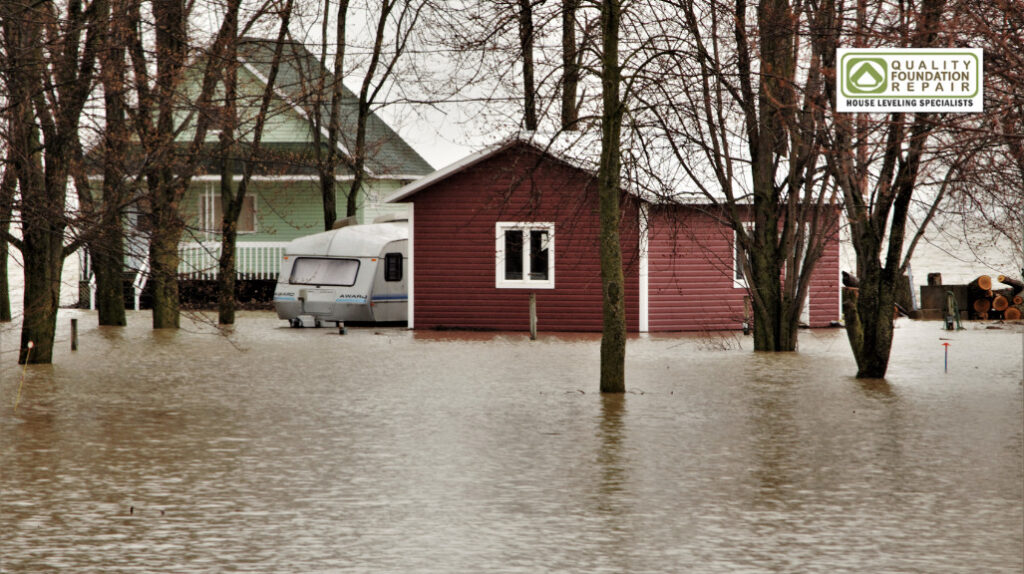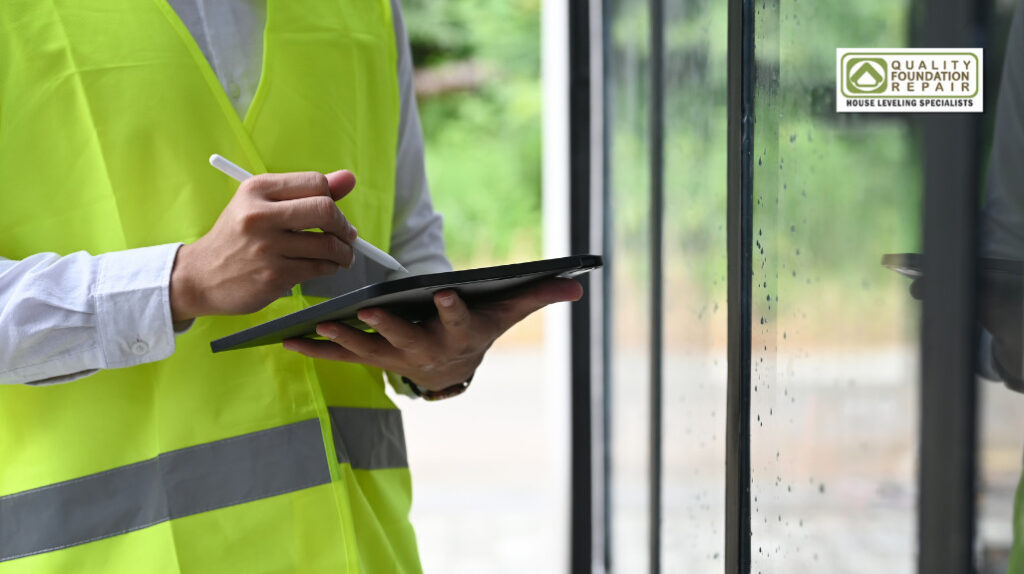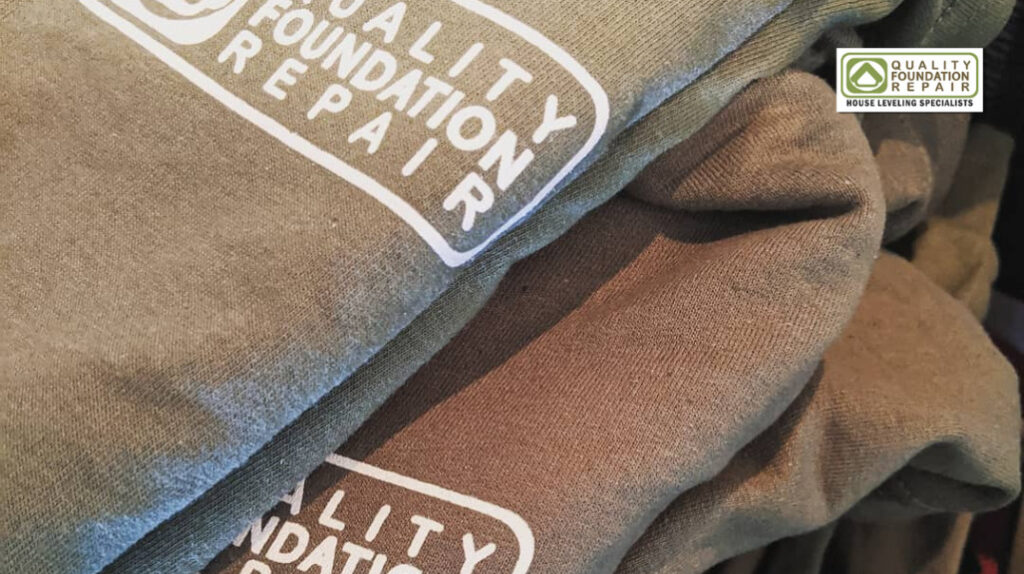
- Does Homeowners Insurance Cover Repairs to the Foundation?
- When Will the Homeowners Insurance Company Cover Foundation Repairs?
- When Homeowners Insurance Won't Cover Foundation Damage
- What You Should Do After Foundation Damage
- Ways to Prevent Foundation Damage
- Foundation Damage – The Warning Signs
- Why Work with Quality Foundation Repair Austin
- FAQs About Homeowners Insurance
Having a strong foundation is essential because it keeps the house dry, stable, and insulated against the natural settlement and shifting of the soil beneath. Many homeowners will discover a problem with the foundation, which is expensive, stressful, and frustrating. They may wonder: Will homeowners insurance cover foundation damage?
Homeowners insurance might cover the home’s foundation against particular risks, but some foundation damage isn’t covered by most policies. For example, natural wear and tear for an older home isn’t usually covered.
If you worry about foundation damage and the necessity of repairs, it’s beneficial to know what an insurance policy does and doesn’t cover. Let’s learn about this now!
Does Homeowners Insurance Cover Repairs to the Foundation?

Will homeowners insurance cover foundation repair? In most cases, it will, but it solely depends on your situation.
You must determine the cause of the problem to see if your home insurance policy will cover the foundation. Sometimes, it’s obvious, such as damage from an earthquake or tornado.
The root cause of the foundation problem might not be apparent immediately. Then, you’ll need to call in a specialist to come to your house and assess the situation. They’ll help you determine what caused the foundation issues and give you an idea of the repairs you might need. Plus, the report will provide evidence if you choose to file a claim later.
Generally, the most common causes of foundation issues can include:
- Earth movement
- Plumbing leaks
- Tree root growth
- Faulty construction
- Natural disasters (tornadoes, mudslides, and earthquakes)
- Pooling water
- Too little/much moisture in the soil
When Will the Homeowners Insurance Company Cover Foundation Repairs?
Most home insurance policies will provide dwelling coverage, which is part of the policy protecting the home’s physical structure, foundation, and attached structures. The most common options include HO-5 and HO-3. They offer dwelling coverage with open perils, meaning no loss is automatically excluded.
Does your home insurance cover foundation damage? In most cases, it will protect you from these covered perils:
- Explosions
- Windstorms
- Water damage from an overflow in the HVAC system
- Falling objects
- Vandalism
- Aircraft or vehicles driving into the home
- Fire
It’s crucial to read through your home insurance policy to determine which perils are included. If those things cause the foundation damage, it’s likely you can file a claim successfully.
When Homeowners Insurance Won’t Cover Foundation Damage
While home insurance will cover many foundation damage issues, it won’t protect against everything.
For example, some people think that homeowners foundation protection is automatic after a natural disaster. However, most home policies will specifically exclude floods and earthquakes, which do the most foundation damage. If you live in a place where those disasters are common, you’ll need separate flood or earthquake insurance to safeguard your property.
Likewise, home policies probably won’t provide repair insurance to the foundation when the problem comes from routine wear and tear. Most agreements only offer coverage for direct physical loss or sudden/accidental loss. This is defined as damage from an accident or another event.

Therefore, companies often argue that it’s the homeowner’s responsibility to deal with routine maintenance. They’ll label most foundation issues as negligence on the homeowner’s part.
Specifically, insurers often deny coverage for cracking, shifting, and settling foundations. This could be caused by earth movement, tree roots, soil fluctuations, and temperature changes. They will say those losses weren’t accidental or sudden, and it’s your responsibility to address those concerns as part of routine maintenance.
Likewise, you probably won’t get foundation help if you had a faulty construction problem. To avoid the issue and those out-of-pocket costs, ensure you request a home inspection before you buy a new home.
What You Should Do After Foundation Damage
If the home’s foundation gets damaged from a covered peril, you should call the insurance company as soon as possible after it happens. Most insurers will offer coverage for a specified time frame after the peril.
When you call your insurer, ask about the evidence you’ll need for the claims process. Take videos and photos to document the damage as long as it’s safe.
Once you file your claim, the company might want to send someone to the property to assess the damage in person. Likewise, you may want to hire a foundation specialist to inspect the property, including that report in the claim.
To have a successful claim, you’ll have to meet the insurer’s requirements. Ask questions about the process to ensure you’ve got everything covered.
Most insurers have recommended contractors they often use. They might guarantee the workmanship for a specified time afterward. However, you’re free to use your own contractor.
Ways to Prevent Foundation Damage
While the home insurance policy might offer some foundation insurance, it’s best to avoid foundation issues from the start. Here are some ways to prevent foundation problems:
- Request a Home Inspection First – If you’re buying a new house, don’t skip out on the inspection. This is the easiest way to find out problems, which will help you avoid future issues.
- Maintain the Soil – If the soil stays wet or dry, it strains the foundation. You should understand your climate and act appropriately. For example, if you’re area is prone to droughts, consider watering the soil periodically. Alternatively, if you get more moisture, make sure there’s a drainage system in place.
- Check the Grading – Water should drain away from the home when it rains. You need 6 inches (at least) of grading away from the 10 feet surrounding it.
- Clean the Gutters – Clogged gutters can cause water to spill over the edge and onto the soil around the foundation.
- Mind the Trees – Watch the trees close to your home to ensure the roots don’t spread to the foundation. Relocate them if needed and leave ample room when planting. Generally, you need 1 foot of root spreading for every inch of thickness of the tree’s trunk.
- Address Cracks Quickly – If you see foundation cracks, don’t wait to hire a professional to assess the situation. Acting fast will likely keep damage and costs low.
- Put Down Mulch – Mulch around the house will maintain the moisture levels and temperature in the soil, which means less pressure on the foundation.

Foundation Damage – The Warning Signs
There are warning signs of foundation damage you must be aware of. Knowing what they are can prevent further damage to the house:
Cracks and Uneven Floors
Cracks in the tiles, sheetrock, chimney, and home’s exterior can mean a cracked foundation, especially if they’re zig-zagged or horizontal. Likewise, you may notice uneven floors that indicate worsening cracks.
Wet Crawl Spaces
A wet crawl space might indicate a cracked or crumbling foundation. If the area floods easily or if the pier and beam foundation gets poorly sealed, water will get into your crawl space, causing water damage. Then, water in the cracks will weaken it more.
Crumbling and Shifting
Crumbling might indicate that the concrete is slowly deteriorating, which will lead to a failed foundation eventually. You may see white powder or rust-colored residue.
Another problem is shifting. If the walls, support posts, ceilings, and floors are leaning or warped, you’ll need to see if they’re level. Likewise, you might notice that windows and doors won’t fit properly when they used to. This means:
- The foundation is sinking or settling.
- The poured concrete foundation might be flaking or chipping.
- Cabinets and counters can separate from the walls.
- Nails could pop out of your drywall.
Bugs
If you see bugs around the foundation or in the house, this might mean you have cracks or gaps where they’re entering the home.
Why Work with Quality Foundation Repair Austin

In most cases, it’s wise to repair the foundation when you initially see cracks or any signs of foundation problems. They’re often easier to handle when they’re small, and you may have fewer repairs to make.
Overall, ignoring your foundation problems will lead to major structural issues. Sagging floors can be dangerous! Foundation repairs, in this case, mean the flooring must be removed so that the contractor can dig underneath to fix the concern.
When you have more cracks, you’ll need to remove more flooring. This makes it more expensive and extensive to handle.
Though the insurance company might not cover foundation repair, you should still get a policy that meets your needs because it offers many coverage options.
However, the best way to avoid issues is to prevent foundation damage altogether. You learned how to do that earlier. Now, it’s time to focus on how to get the foundation fixed if you’re experiencing problems. Quality Foundation Repair Austin is here to help. We work with many types of foundations and offer fast solutions that save you time and money. Please call (512) 363-7769 for your free estimate today, or use the online form for convenience.
FAQs About Homeowners Insurance
Does Homeowners Insurance Cover Foundation Cracks (Structural)?
In most situations, a homeowners insurance policy will not cover foundation cracks and settling. Though the home’s foundation has protection under the dwelling coverage, it only helps in certain events.
What Home Repairs Do Most Insurance Providers Cover?
Homeowners insurance companies often cover these things:
– Mechanical items in the home
– Indoor plumbing
– Most appliances
– Wiring systems
– HVAC systems
Does Homeowners Insurance Cover Broken Pipes Under the Foundation?
It’s wise to check your homeowners insurance policy, but most companies do cover the removal of the old slab and pouring a new one. However, it might not offer help with pipe repairs.
Is a House Safe After Foundation Repairs?
If the repairs were done correctly, the house should be safe to live in once again. However, you may need an inspection from a structural engineer to get the green light from the city.



